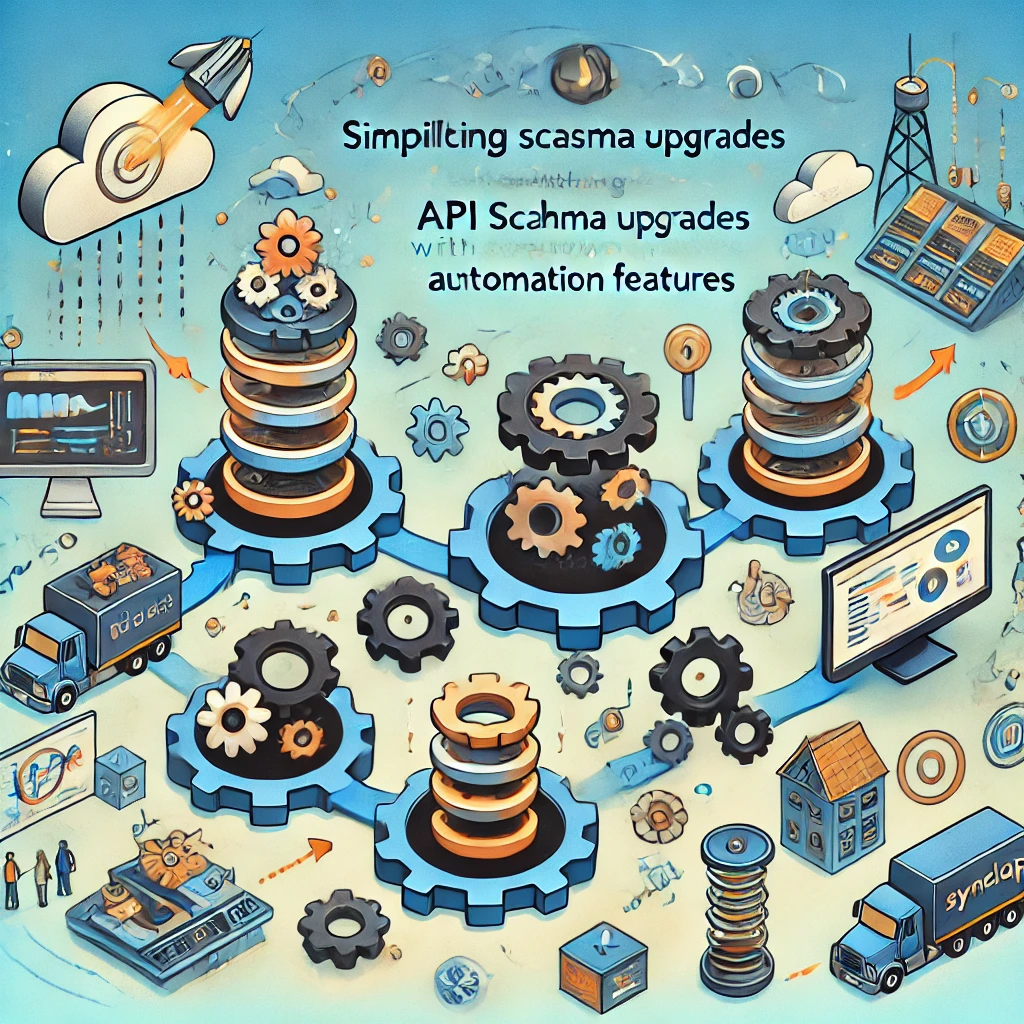Simplifying API Schema Upgrades with Syncloop’s Automation Features

Syncloop simplifies API schema upgrades with automation tools that streamline the process, minimize errors, and maintain backward compatibility. This blog explores how Syncloop supports schema upgrades and offers best practices for managing changes effectively.
The Importance of API Schema Upgrades
API schema upgrades are critical for:
- Extending Functionality: Adding new features and capabilities to APIs.
- Improving Performance: Optimizing data structures for faster processing.
- Enhancing Compatibility: Supporting new standards and integration requirements.
- Maintaining Security: Addressing vulnerabilities through updated structures.
Challenges in API Schema Upgrades
- Backward Compatibility Ensuring existing integrations remain functional after schema changes.
- Data Integrity Migrating and validating data to match the new schema without loss or corruption.
- Version Management Managing multiple schema versions to support legacy and new clients.
- Testing and Validation Thoroughly testing upgraded APIs to ensure functionality and performance.
- Communication Informing stakeholders and developers about changes and their impact.
How Syncloop Simplifies API Schema Upgrades
Syncloop provides powerful automation features to streamline schema upgrade processes:
- Schema Versioning Manage multiple schema versions seamlessly to ensure backward compatibility.
- Dynamic Data Mapping Automate data transformation between old and new schemas.
- Change Impact Analysis Identify affected endpoints and workflows to prioritize testing and communication.
- Automated Testing Validate schema changes with simulated requests and responses.
- Real-Time Monitoring Track API performance and error rates post-upgrade.
- Workflow Automation Automate tasks such as data migration, endpoint updates, and client notifications.
- Documentation Generation Automatically generate updated API documentation reflecting schema changes.
Steps to Upgrade API Schemas with Syncloop
Step 1: Analyze Schema Changes
Use Syncloop to compare the current and new schemas. Identify:
- Added, removed, or modified fields.
- Changes in data types or structures.
- Impacted endpoints and workflows.
Step 2: Enable Versioning
Implement schema versioning in Syncloop to support both old and new schemas. For example:
- /v1/products: Legacy schema.
- /v2/products: Updated schema.
Step 3: Configure Data Mapping
Leverage Syncloop’s dynamic data mapping tools to transform data between schemas. For example:
- Map deprecated fields to their new counterparts.
- Handle type conversions (e.g., integer to string).
Step 4: Automate Testing
Run automated tests using Syncloop’s testing environment to validate:
- Compatibility with legacy clients.
- Functionality of new schema endpoints.
- Performance metrics for upgraded APIs.
Step 5: Deploy Incrementally
Use Syncloop’s workflow automation to roll out schema changes in stages. Monitor performance and address issues before full deployment.
Step 6: Notify Stakeholders
Generate updated documentation with Syncloop’s tools and share it with developers and stakeholders. Include:
- A summary of schema changes.
- Guidelines for integrating with the new schema.
- Timelines for deprecating old versions.
Step 7: Monitor and Iterate
Track API performance and usage with Syncloop’s real-time monitoring tools. Use insights to refine and optimize the upgraded schema.
Best Practices for API Schema Upgrades
- Maintain Backward Compatibility Always support legacy clients during the transition phase.
- Adopt Incremental Changes Roll out updates gradually to minimize risks.
- Communicate Early and Clearly Inform developers and stakeholders about upcoming changes well in advance.
- Automate Testing and Validation Use Syncloop’s automation tools to ensure thorough and consistent testing.
- Document Extensively Provide clear and detailed documentation of schema changes and migration steps.
Example Use Case: E-Commerce Platform API Upgrade
An e-commerce platform uses Syncloop to upgrade its product catalog API schema:
- Schema Changes: New fields for product ratings and reviews are added; deprecated fields are removed.
- Versioning: Legacy clients continue to use /v1/products, while new clients adopt /v2/products.
- Data Transformation: Syncloop maps legacy fields to new ones for seamless integration.
- Automated Testing: Validate functionality and performance of the upgraded schema.
- Stakeholder Communication: Updated API documentation is shared with developers and partners.
- Monitoring: Real-time tracking of API performance ensures a smooth transition.
Benefits of Using Syncloop for Schema Upgrades
- Reduced Downtime: Automate upgrades to minimize disruptions.
- Improved Compatibility: Seamlessly support legacy and new clients.
- Enhanced Efficiency: Streamline tasks such as data migration and testing.
- Proactive Insights: Monitor performance to address issues quickly.
- Comprehensive Support: Manage the entire upgrade lifecycle with Syncloop’s tools.
The Future of API Schema Management
As APIs become more integral to business operations, schema upgrades will remain a critical aspect of maintaining flexibility and functionality. Syncloop’s advanced automation features empower developers to execute schema changes with confidence, ensuring APIs evolve seamlessly to meet future demands.
Image Description
A conceptual illustration of API schema upgrades powered by Syncloop, featuring versioning, dynamic data mapping, automated testing, and real-time monitoring. The image highlights seamless transitions and compatibility management.
Back to Blogs